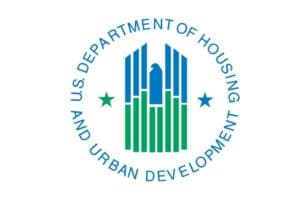On September 6, the housing and Insurance Subcommittee of the House Financial Services Committee held a hearing to examine how the costs of regulation are forming a barrier that prevents more affordable housing development.
“The lack of development is especially concerning,” said subcommittee chair Sean Duffy (R-WI), “because while we continue to enjoy some of the lowest rates of unemployment in our history, people are having trouble finding affordable housing in areas they are being offered jobs.”
Key takeaways from the session, as released in the subcommittee’s report, were:
- Housing trends in the United States will dramatically change over the next 25 years as more individuals opt to rent housing rather than become homeowners.
- Multifamily housing development can be subject to a significant array of regulatory costs, including a broad range of fees, standards and other requirements imposed at different stages of the development and construction process.
- When regulatory costs become too expensive, it can hinder development, reduce housing supply, and further exasperate housing affordability problems.
“…[m]andates at all levels of government have expanded beyond basic safety and soundness considerations and morphed into complicated compliance regimes, expensive code changes, energy efficiency mandates and/or restrictive land use policies. The compliance costs and fees associated with such policies are exacerbating the difficulty of providing safe, decent, and affordable rental housing,” said panelist Steven E. Lawson, Chairman, The Lawson Companies, on behalf of the National Association of Home Builders.
Sept. 4 — The Subcommittee on Housing and Insurance will hold a hearing entitled “The Cost of Regulation on Affordable Multifamily Development” Wednesday, September 5, 2018, at 2:00 p.m. in Room 2128, Rayburn House Office Building. The hearing will focus on the various federal, state and local regulations and polices that affect affordable multifamily
housing development. This will be a one-panel hearing with the following witnesses:
- Ms. Sue Ansel, President and Chief Executive Officer, Gables Residential, on behalf of the National Multifamily Housing Council
- Mr. Steven E. Lawson, Chairman, The Lawson Companies, on behalf of the National
Association of Home Builders - Ms. Erika Poethig, Vice President and Chief Innovation Officer, The Urban Institute
- Mr. James H. Schloemer, Chief Executive Officer, Continental Properties Company,
Inc.
Numerous studies suggest housing trends in the United States will dramatically change for the next 25 years as more individuals opt to rent housing rather than become homeowners. The studies suggest that this trend will accelerate for seniors, young professionals, and working families. More importantly, recent studies suggest that multifamily housing development can be subject to a significant array of regulatory costs, including a broad range of fees, standards and other requirements imposed at different stages of the development and construction process. When regulatory costs become too
expensive, it can hinder development, reduce housing supply, and further exasperate housing affordability problems. Some studies conclude that regulation imposed by all levels of government can account for up to 30 percent of multifamily development. The hearing will identify regulatory barriers that inhibit or prevent the development
of affordable housing, to assess how these barriers affect the cost of building and maintaining affordable housing, and to offer suggestions on how such policies should change to meet future demand for such units.
Supplemental Materials
- NAHB Blog Post: Regulation: Over 30 Percent of the Cost of a Multifamily Development
- NAHB/NMHC Study: “Multifamily Cost of Regulation 2018 Special Study” by Dr. Paul Emrath (NAHB) and Caitlin Walter (NMHC), June 2018
